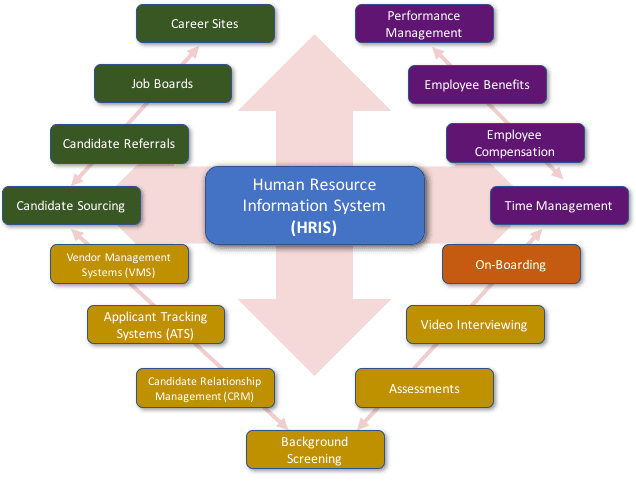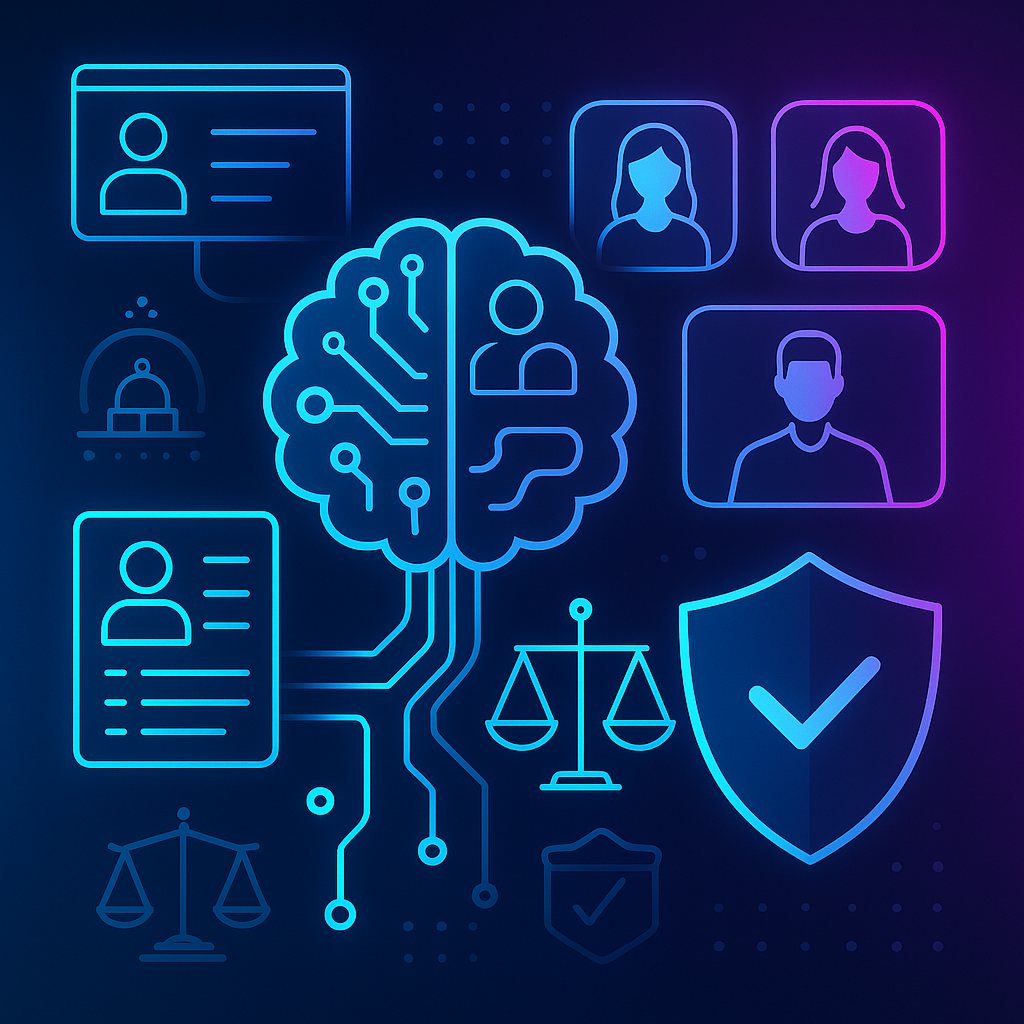HR Tech: How to Promote HR Open Standards

HR Tech has gained a tremendous amount of attention, entrepreneurs, investments, and innovation during the past several years. Today there are thousands of software vendors and vendor products to choose from, and in many categories, hundreds of prospective products to choose from in each category. There are numerous abstract models to categorize HR Tech products, including the following illustration:
In a perfect world from an end-user perspective, businesses, institutions, and enterprises would have the freedom and flexibility to choose the best software solution to meet their specific business requirements from various vendors across the entire HR Tech spectrum. Each product would virtually “plug and play” into their business, interoperating seamlessly throughout their respective HR technology ecosystem, along the lines of the following illustration:
This model would ensure that organizations can maintain a “single version of the truth” relative to data accuracy and integrity accompanied with streamlined business processes throughout the entire Human Resources function. Bottom line – eliminating “fire drills”, finger-pointing, second guessing, and continuous process reengineering resulting in increased efficiency, quality, reliability, and accountability in the department.
Now returning back to reality. This vision remains a fantasy of Human Resources departments throughout all organizations across the globe. While many HR organizations rely on dozens of different software solutions to support their employees and businesses, far too often their internal processes are totally broken or inefficient at best, and the quality of data across their HR systems ecosystem is inconsistent at best.
Ideally, an employee’s name (salutation, first, middle, last, suffix), address (street, apartment number, PO box number, city, county, state, region, country, postal code, etc.), telephone number (i.e. E.164 format), job title, et al for all HR software products would include a consistent definition of international standard attributes, data formats, and validation logic for each relevant piece of information across all the responsibilities of an HR department. This concept of maintaining a common data dictionary along with a standard methodology and techniques to share data across software products from various vendors would facilitate the “plug and play” vision noted earlier.
Far too often, the resource costs to integrate software products from multiple vendors vastly exceeds the costs of the individual software products. More often than not the disparate software products are ultimately not integrated resulting in inefficient processes, data inconsistency, and frustrated customers. As an industry, we are seeing improvements though the increased adoption of Cloud or Software as a Service (SaaS) solutions, modern software engineering methods, and the more recent popularity and adoption of APIs (Application Programming Interfaces, or method to securely exchange data between two software programs).
Recognizing the HR Tech Challenges
The HR Open Standards Consortium has recognized the technical challenges that HR departments face and has been championing HR systems interoperability for almost two decades. Their mission includes:
- To lead the ongoing development of robust, extensible, global HR interoperability standards enabling easy-to-implement, time- and cost-effective integration of HR systems.
- To expand and engage the community in sharing experiences and expertise for the betterment of the community.
- To collaborate with other standards organizations to ensure interoperability and business alignment.
The Consortium includes dozens of HR Tech vendors, associations, and corporations that share a common vision of increasing interoperability across the entire HR Tech ecosystem. Consortium workgroups meet on a weekly basis to collaborate to define standard terminology, processes, use cases, and code for all core HR functions and activities.
They have published industry standard XML and JSON Specifications for Assessments, Candidates, Benefits, Contingent Staffing, Employee Performance Management, Payroll, Provisioning, Recruiting, Screening, and Time Management. There are currently active HR-JSON workgroups for Assessments, Benefits Enrollment, Competencies, Contingent Staffing, Interviewing, Payroll, Recruiting, Salary Survey, and Screening.
Final Thoughts
Leoforce is a proud member of the HR Open Standards Consortium and a contributing member of the Recruiting Workgroup. The Recruiting Workgroup is working on finalizing their 4.2 JSON Specification targeted for publication this fall. This updated set of database schemas, use cases, process documentation, and JSON code samples provides a roadmap towards developing a common language for HR Tech software applications to seamlessly and securely share data.
We are committed to an Open API model and embracing the industry standards published by the HR Open Standards Consortium and open integration model with other members of the HR technology ecosystem.
Want to Learn More about our dedication to open API’s and how we secure our data? Get the details here.
Guest post by: Jack Spain, Manager, Business and Partnership Development @ Leoforce







